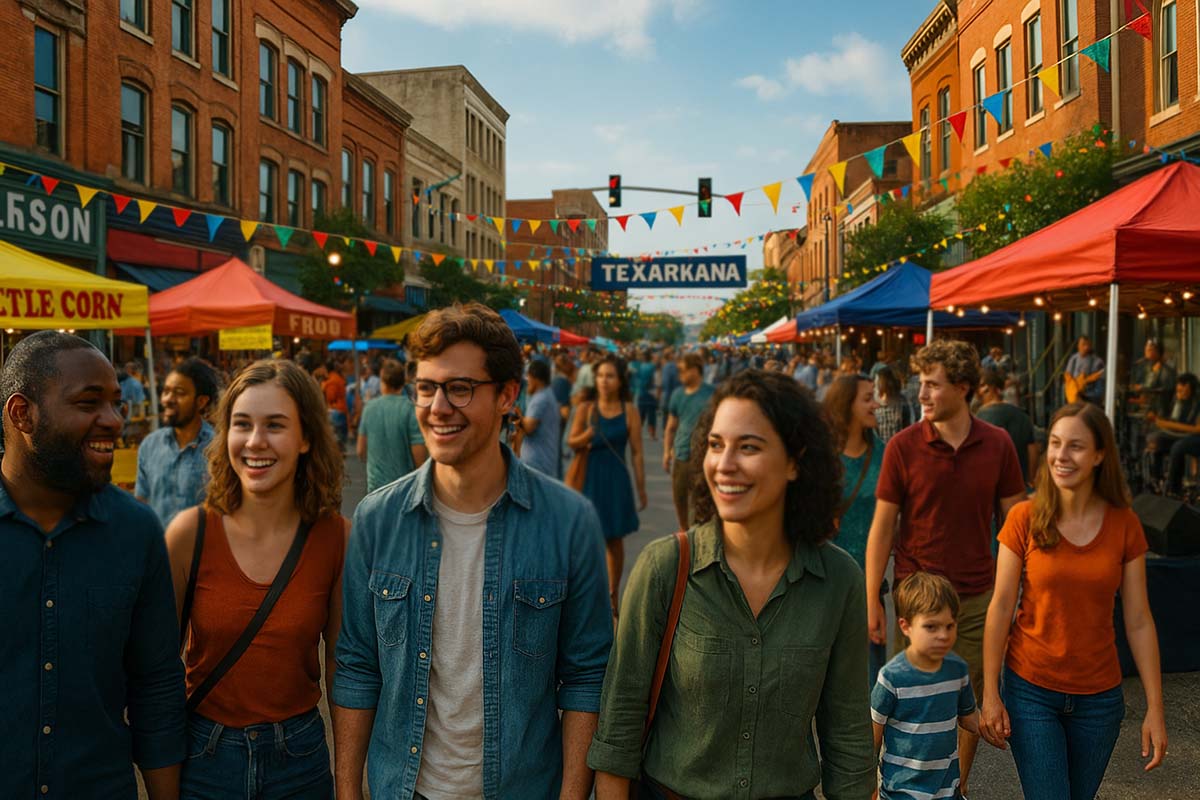Understanding how people move and how cities grow matters to anyone interested in community progress. Texarkana, Texas, stands out because of its unusual geography—situated along the line separating Texas and Arkansas. Many young professionals, students, and community leaders find it useful to examine what this city tells us about broader patterns of economic and social growth.
Why People Are Talking About Texarkana
Population growth doesn’t just mean more births or people moving in. It often signals more business activity, better education access, and wider employment options. Texarkana has become a hub for transport, tourism, and trade in its region. Even though it’s smaller than Dallas or Houston, it plays a key role in southern commerce.
In many parts of the world, cities attract people hoping for a better life. Texarkana shares this trend. Jobs, schools, and transport links make it appealing to people across Texas and beyond.
History and Geography Matter
Texarkana has long been a meeting point for travelers and traders, even before state lines were formally drawn. Over the decades, this twin-city area grew thanks to train routes, trade, and later, local industry.
Its place in the Ark-La-Tex region means it draws people from multiple directions. The city reflects a blend of cultures, values, and goals—a mix that continues to shape its growth.
Growth Backed by Numbers
According to the U.S. Census Bureau, around 36,000 people lived on the Texas side in 2020. Combined with its Arkansas half, the wider area holds over 60,000. While not massive, this slow but steady increase matters.
Urban experts recognize that mid-size cities like Texarkana serve an important role. They provide employment, attract small investors, and receive public funding that larger cities may overlook.
What’s Driving the Growth?
Several industries have added jobs in Texarkana. These include manufacturing and logistics, thanks to the city’s accessible location. Schools and colleges have also attracted students, pointing to long-term career opportunities for locals.
Some people relocate for peace of mind. Unlike bigger cities, Texarkana offers wider living spaces, lower costs, and slower pace. Retirees are especially drawn to this balance.
Job Opportunities and Economic Growth
- Steady rise in local college enrollments
- Better access to mid-level careers in logistics, healthcare, and education
- Local shops and trade fairs providing income and employment
- City planning that favors new housing and mixed-use areas
Everyday Life and Infrastructure
More people means more roads, schools, clinics, and services. Recent upgrades include better highways, parks, and suburban developments. Along with these changes, there’s greater demand for police, fire protection, and public transport.
Environmental care also comes into play. Without proper planning, unchecked growth could harm forests and water systems. Fortunately, many groups—both public and private—are working to keep nature and construction in balance.
A Global Pattern with Local Features
Urban growth is not just a U.S. trend. Across continents, cities are expanding as people seek jobs, safety, and stronger social services. Each place has its own story, but shared lessons help shape smart decisions.
Texarkana benefits from its position as a trade center in the American South. Mid-sized cities in Asia and Europe that lie on provincial or national borders often see similar trade and transport advantages.
Transportation Is Key
To support growth, Texarkana is expanding major roadways. This also supports truck routes, freight flow, and access to nearby towns. Similar projects are seen in countries where urban areas are growing rapidly.
Good transportation cuts costs and travel time. Fresh produce gets to stores faster, and commuters save time and fuel. A strong transport network often signals an overall rise in quality of life.
Using Tech to Plan Better Cities
Tools like GIS mapping and data analysis help local leaders decide where to build next. These tools track facility conditions and help budget public projects wisely.
In Texarkana, early moves toward smart traffic lights and public safety tools show a shift toward more connected city management—even on a smaller scale.
The Role of Schools and Local Culture
As the city expands, so do its academic programs. Local colleges offer more courses tied to in-demand careers. This setup brings in talent from surrounding areas and supports long-term employment goals.
On the cultural side, Texarkana blends Texan and Arkansan traditions. From food to music, this fusion enriches community life and draws interest from tourists and investors alike.
Community Projects That Make a Difference
Texarkana’s people aren’t just waiting on government programs. Locals have started projects to keep their community strong:
- Downtown Revival: Renovations, events, and local art projects breathe life into the city center
- Youth Training: Mentorship and skill-building workshops for high schoolers
- Environmental Actions: Tree planting and waterway protection programs
- Local Business Fairs: Markets that showcase products made by locals, adding income and pride
Comparing Texarkana to Other Cities
Many towns around the world share Texarkana’s mid-size status and border location. That often leads to fast movement of goods, ideas, and people. These smaller cities might not make headlines, but they offer clearer views of what works—and what doesn’t.
In smaller settings, plans are easier to test and adjust before they’re applied to major cities. This makes mid-size cities valuable to researchers and policy thinkers.
Local Government and Its Role
Urban planning requires more than good ideas—it needs open communication. In Texarkana, city officials speak regularly with residents. This feedback loop helps adjust plans to suit real needs.
Involving the public increases support and reduces waste. It’s a lesson many progressive cities around the world are starting to embrace.
Public-Private Collaboration
Development isn’t just the government’s job. Private businesses and nonprofits play a huge part too. When these groups invest, they bring not just money but energy and ideas.
Texarkana’s location makes it ideal for shipping and logistics companies. Investments like these have boosted job openings and upgraded public spaces.
What This Means for Daily Life
To a regular resident, this growth can bring:
- Wider job choices
- Better healthcare and education
- More social events and public spaces
But it also brings concerns: rising rent, busy roads, and pressure on utilities. These challenges call for teamwork among leaders, locals, and private groups.
Lessons Other Cities Can Learn
Texarkana’s story shows the value of careful planning. Understanding not just numbers but culture and nature leads to wiser decisions. Many other cities, big and small, can draw from this model.
When governments, citizens, and investors align, progress follows. That pattern is visible across continents, whether in Latin America, Asia, or Europe.
Looking Ahead
Texarkana is expected to keep growing. New homes, better healthcare, and stronger industry ties may follow. With the right road upgrades, the city might attract even more people from nearby regions.
Other nations have noticed this trend too: smaller towns that offer quiet living and easy transport are becoming more attractive to a wide range of people.
Global Challenges, Local Solutions
While global issues like climate change and population pressure continue, cities like Texarkana show that even modest efforts help. Recycling, cleaner air programs, and smarter building rules are part of the city’s ongoing plans.
Why People Power Still Matters
At the core of it all are the residents. Many give time, skills, or resources to keep their city welcoming. Online posts, street cleanups, and community gardens are just some of the ways people stay involved.
This spirit mirrors what’s happening in other towns where public pride fuels steady, thoughtful development.
Texarkana may not be a global capital, but it carries valuable lessons. A city doesn’t need to be large to be smart, responsive, and full of potential. Its progress is the result of many small efforts—by individuals, by groups, and by the local government.
Other towns and cities hoping to grow with care can look to Texarkana not as a copy-paste model, but as proof that clear goals and strong community ties build a bright future.



